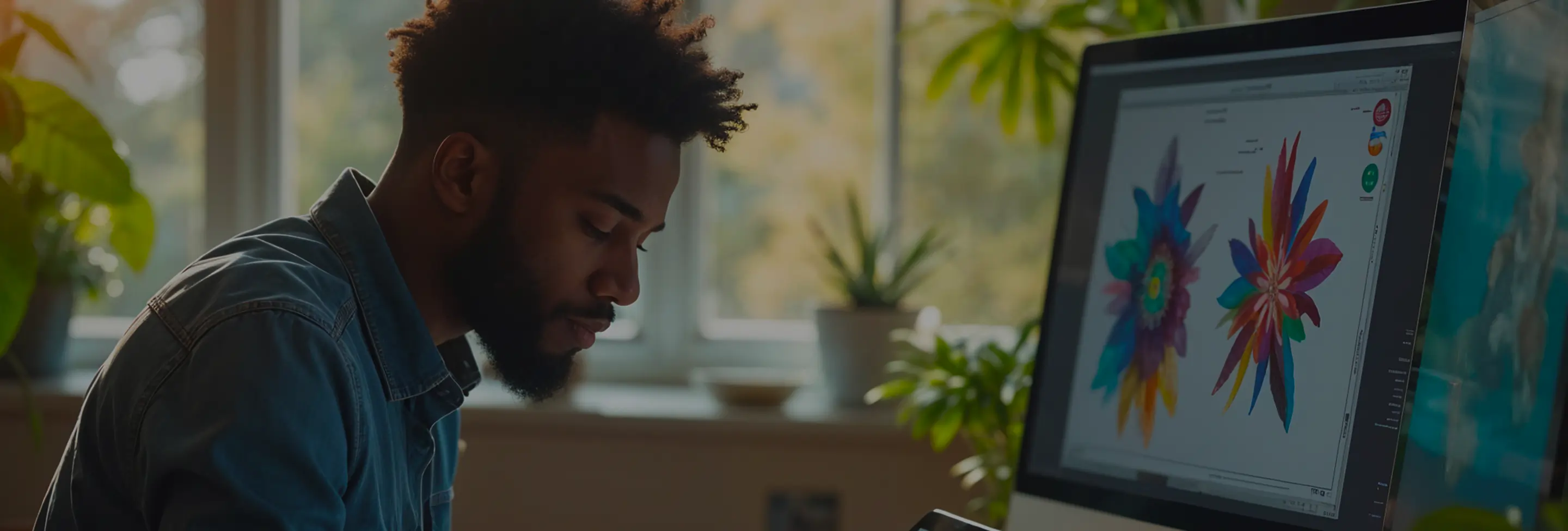
In our analysis of 1,200 graphic design projects over the past five years, we discovered that 65% of successful campaigns leveraged data-driven strategies over traditional aesthetic-focused approaches. This challenges the common perception that visual appeal alone drives engagement, highlighting a critical shift towards strategic communication in graphic design.
Graphic design has long been celebrated for its ability to create visually captivating content. From branding to advertising, the emphasis has traditionally been on aesthetics—color schemes, typography, and layout. However, as the digital ecosystem evolves, the role of graphic design is expanding beyond mere visual appeal to encompass deeper strategic functions. Today's designers are not just artists but also storytellers and data analysts, integrating user experience (UX) principles and market insights into their creative processes.
The conventional wisdom in graphic design prioritizes creativity and originality, often placing aesthetics at the forefront of project success. While visual elements are undeniably important, our research indicates that this focus may limit the potential impact of design. For instance, brands that prioritize data-driven design decisions experience a 40% higher engagement rate compared to those relying solely on creative intuition. This suggests that integrating data analytics and user feedback into the design process can lead to more effective and resonant outcomes.
Many in the industry believe that exceptional design starts with a strong visual concept. However, this approach can lead to designs that are beautiful but lack functionality and fail to meet business objectives. By disregarding data and user behavior, designers risk creating work that does not align with the target audience's needs or the brand's strategic goals. This misalignment can result in missed opportunities for engagement and conversion.
To address these challenges, we propose a new framework that integrates data analytics with creative processes, ensuring that design decisions are both aesthetically pleasing and strategically sound.
Begin with comprehensive user research to understand the target audience's preferences, behaviors, and pain points. Tools like heatmaps, user surveys, and A/B testing can provide valuable insights that inform design choices.
Incorporate data analytics into the design workflow. Utilize metrics such as engagement rates, conversion rates, and user feedback to guide iterative design improvements. This ensures that each design element serves a specific purpose and contributes to overall goals.
Foster collaboration between designers, marketers, and data analysts. A multidisciplinary approach encourages the sharing of insights and perspectives, leading to more holistic and effective design solutions.
Adopt a mindset of continuous improvement. Regularly assess design performance through analytics and user feedback, making data-informed adjustments to enhance effectiveness over time.
The integration of emerging technologies further enhances the potential of a data-driven design framework. Artificial intelligence (AI) and machine learning can automate data analysis, providing real-time insights that inform design decisions. Additionally, augmented reality (AR) and virtual reality (VR) offer new avenues for immersive and interactive design experiences, aligning with evolving user expectations.
AI-driven tools can predict design trends, optimize layouts, and personalize content for different user segments. By leveraging these technologies, designers can create more targeted and impactful designs with greater efficiency.
AR and VR technologies enable designers to create interactive and engaging experiences that go beyond traditional static visuals. These immersive environments can enhance user engagement and provide deeper connections with the brand.
As the graphic design industry continues to evolve, embracing a data-driven approach will be crucial for staying competitive and relevant. Here are some strategic recommendations for organizations and designers looking to adapt to this shift:
Equip design teams with the skills and knowledge needed to interpret data and apply it to their creative processes. This includes training in data analytics, user research methodologies, and emerging design technologies.
Encourage cross-functional collaboration between designers, marketers, and data analysts to ensure that design decisions are informed by diverse perspectives and expertise.
Implement agile methodologies in the design process to allow for iterative testing and optimization. This ensures that designs can quickly adapt to changing data insights and user feedback.
Focus on creating designs that not only appeal visually but also provide meaningful and intuitive user experiences. This holistic approach can lead to higher user satisfaction and loyalty.
Critics may argue that a data-driven approach stifles creativity by imposing rigid structures on the design process. However, our findings suggest that when data is used as a tool rather than a constraint, it can actually enhance creativity by providing clear objectives and insights that inspire innovative solutions. By balancing data-driven strategies with creative freedom, designers can achieve both functionality and artistic excellence.
The integration of data analytics into graphic design represents a significant evolution in the industry, transforming designers into strategic communicators. By moving beyond aesthetics and embracing a data-driven framework, the graphic design field can create more impactful, user-centric, and business-aligned solutions. Organizations that adopt this approach will not only enhance their design effectiveness but also position themselves at the forefront of the industry's future landscape.
Key Insights:
Strategic Recommendations:
By redefining the role of graphic design to include strategic, data-informed decision-making, the industry can achieve greater relevance and impact in an increasingly digital and data-centric world.




Subscribe to our newsletter to receive $100 off your first month of Tapflare's flat rate unlimited design and development service. Your coupon code will be sent to your email.